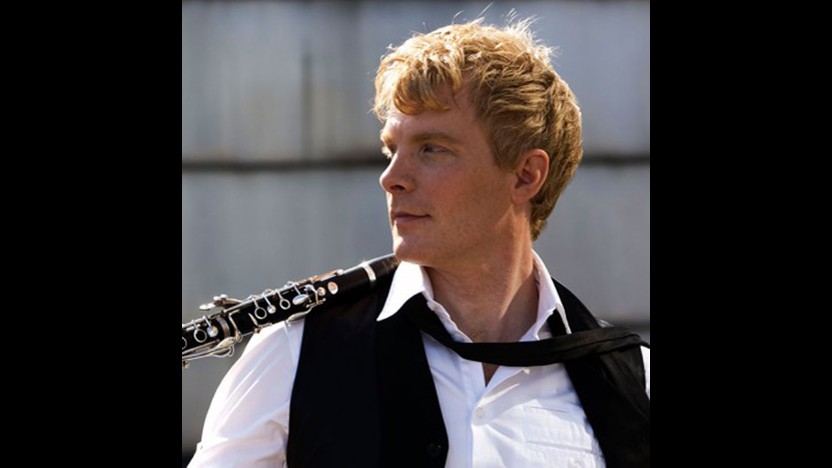Martin Fröst and Mozart’s 39th Symphony

Sponsored By
- March 10, 2018


Sponsored By


(Duration: 25 min)
When Wolfgang Amadeus Mozart began writing symphonies, he was an eight-year-old keyboard prodigy in London, where he had played for King George III and befriended Johann Christian Bach — the youngest son of Johann Sebastian Bach, and a trendsetter in the emerging genre of the symphony. As a teenager back in his hometown of Salzburg, Mozart looked to the example of Franz Joseph Haydn, whose brother happened to work alongside Mozart and his father, and some of the symphonies Mozart wrote as a seventeen- and eighteen-year-old ranked among his first truly brilliant compositions. By that time he had already completed three-fourths of his lifetime symphonic output.
Mozart had fewer occasions to write symphonies during his heyday as a busy freelancer in Vienna. He might never have written his three final symphonies were it not for the money troubles that plagued his final years, a period when demand for his performances had dried up. Some opportunity must have sparked this symphonic trilogy, but most likely nothing came of it. Mozart may not even have heard all three before he died.
Symphony No. 39 (the first of the final trilogy) is Mozart’s only mature symphony without oboes, instead featuring clarinets. It is also one of his few symphonies to begin with a slow introduction, a structure favored by Haydn. The mellow key of E-flat and a rolling three-beat tempo reinforce the gentle character of the fast body of the opening movement.
The Andante con moto second movement preserves the docile atmosphere. Strings introduce the innocent theme alone at first, but individual woodwinds later emerge for some of the movement’s most personal passages, their echoing lines interweaving with chamber-music delicacy.
Interrupting the noble and sturdy Menuetto, whimsical clarinet counterpoint in the contrasting trio section parodies the ländler, an Austrian folk dance. In the finale, the main theme separates into malleable scale fragments and leaps, foreshadowing Ludwig van Beethoven’s symphonies with their relentless manipulations of small motives.
Aaron Grad ©2024
Angelus Novus is a piece inspired by a painting done by Paul Klee (Angelus Novus). The painting shows a Talmudic angel looking as though he is about to move away from something he is fixedly contemplating. The angel in the picture is looking back in time and so is the piece. The musical gestures in this music are inspired by the Jewish trop ritual, and the harmonic progression is inspired by a Bach cadenza from his Toccata and Fugue in D Minor for organ, colored by vibrating micro-tonality.
Jacob Mühlrad ©2017
Nomadia for clarinet and orchestra is a journey starting from within the human body continuing out into the universe. It is a tonal nomad traveling through style and time, yet timeless. And the question arises: "where does music go?"
Martin and Göran Fröst ©2017

When you stand very closely to something that is transforming—a butterfly emerging from its cocoon or the emergence of completely new phenomena like social networks or virtual reality—you can seldom understand what it will become just by looking at it. You might be able to imagine some of the implications, but you will not know for sure until afterward. Music, art, culture and society at large are in a state of transformation at the hands of technology, and we who stand in the middle have very limited possibilities of predicting the outcome.
The amazing thing with art is that you can ask questions and paint visions at the same time. Where are music and art heading? Can the endless possibilities of technology become a bridge to the depth of tradition? Can we use emerging technologies to democratize expression, while still choosing excellence over amateurism? How can the immense scope of potential in technology coexist with our limited physicality?
Emerge is the start of a collaboration between soloist Martin Fröst and composer Jesper Nordin where they delve into the possibilities of emerging technologies in music. With the help of other musicians, orchestras and artists from other fields they create visions of the future of music.
Nordin has with his own invention, the Gestrument (gesture instrument), created a way to perform music with movements and gestures in any style of musical expression. In Emerge, Fröst performs not only by playing on his clarinet and by leading the orchestra, but he also controls a virtual orchestra with his movements. This digital orchestra, heard together with him and the live musician orchestra, is played by Fröst in real-time and adds comments and contrast to the orchestra and the soloist.
Jesper Nordin ©2017
Get driving directions and find nearby parking.
Find dining options close to the venue.
View seating charts to find out where you'll be seating.
SPCO concerts are made possible by audience contributions.
For exclusive discounts, behind-the-scenes info, and more:
Sign up for our email club!
